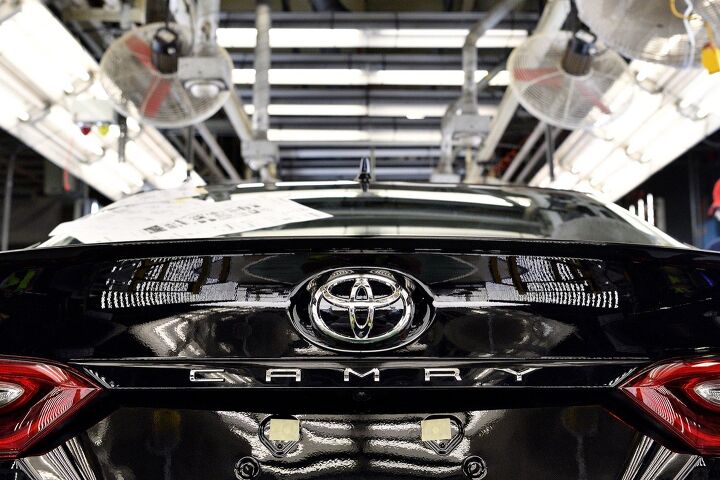All of the New 2018 Toyota Camrys Sold in America in July Were Japan Imports
We learned early in July that many of the early 2018 Toyota Camrys available in Toyota’s U.S. showrooms wouldn’t be built in Toyota’s Georgetown, Kentucky, assembly plant.
Through June, not a single one of the 2016 and 2017 Camrys sold in America were imported. But all of the 2018 Toyota Camrys sold in July came across the Pacific from Japan.
Granted, most of the Camrys leaving Toyota showrooms are still old new Camrys, not new new Camrys.
The reason for Kentucky’s delay? Transitioning to an assembly line that runs the Toyota New Global Architecture requires “a couple steps back before it can move forward in efficiency.” Despite added workforce — Georgetown has more employees now than ever before — ramping up production in Kentucky was never intended to be an instantaneous action.
So after noticing in Toyota’s monthly sales report that Toyota sold 33,827 total Camrys but only 31,230 North American-built Camrys, we wanted to know where the 2017/2018 line was drawn.
“All 2018 Camry’s sold in July were imported from Japan,” Toyota spokesperson Sam Butto tells TTAC.
Without those new Japanese imports, the Toyota Camry was still America’s best-selling midsize car in July. (The Honda Civic was America’s top-selling car overall last month.) But rather than a modest 1-percent downturn, Camry volume would have fallen 9 percent. Instead, the first 2,587 copies of the all-new 2018 Toyota Camry accounted for 8 percent of the Camrys sold in the United States in July.
In total, the Toyota/Lexus family has relied upon non-NAFTA vehicles for 28 percent of the 1,377,222 U.S. auto sales the company’s generated in the first seven months of 2017. Toyota does, however, build more Camrys in the U.S. than any other vehicle.
Through the end of July, the Camry trails the Honda Civic by 1,722 sales in the Toyota’s quest to end 2017 as America’s top-selling car for a 16th consecutive year. Of the 212,446 Civics sold so far in 2017, 44,737 have been England-built hatchbacks.
Meanwhile, Toyota’s Butto says, “As soon as our Kentucky plant finishes ramping up for the 2018 model, all 2018 Camry’s will be manufactured here for the U.S. market.”
[Image: Toyota]
Timothy Cain is a contributing analyst at The Truth About Cars and Autofocus.ca and the founder and former editor of GoodCarBadCar.net. Follow on Twitter @timcaincars.
More by Timothy Cain
Latest Car Reviews
Read moreLatest Product Reviews
Read moreRecent Comments
- Spectator Wild to me the US sent like $100B overseas for other peoples wars while we clammer over .1% of that money being used to promote EVs in our country.
- Spectator got a pic of that 27 inch screen? That sounds massive!
- MaintenanceCosts "And with ANY car, always budget for maintenance."The question is whether you have to budget a thousand bucks (or euro) a year, or a quarter of your income.
- FreedMike The NASCAR race was a dandy. That finish…
- EBFlex It’s ironic that the typical low IQ big government simps are all over this yet we’re completely silent when oil companies took massive losses during Covid. Funny how that’s fine but profits aren’t. These people have no idea how business works.



































Comments
Join the conversation
gimme a J vin any time. as for the orange peel? seems to me the germans are wurst at it.
I'll be! The US isn't competitive in the auto business! Australia Camry production moved to Japan as well. This is a good idea by Toyota. The consumer will get a better and cheaper product.